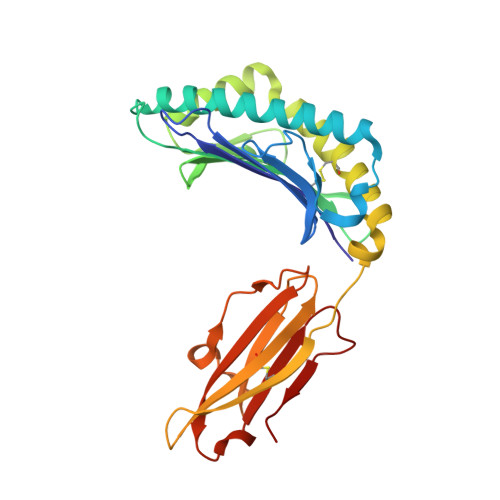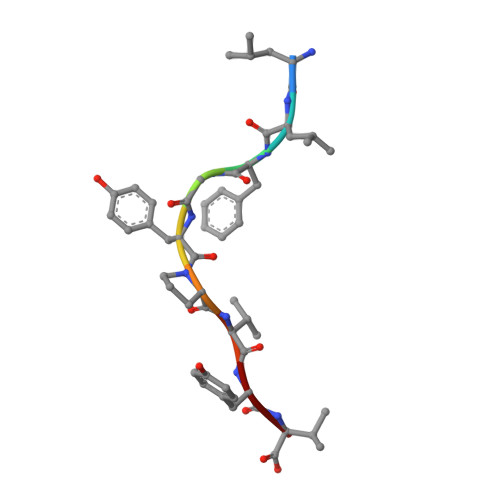The structure and stability of an HLA-A*0201/octameric tax peptide complex with an empty conserved peptide-N-terminal binding site.
Khan, A.R., Baker, B.M., Ghosh, P., Biddison, W.E., Wiley, D.C.(2000) J Immunol 164: 6398-6405
- PubMed: 10843695
- DOI: https://doi.org/10.4049/jimmunol.164.12.6398
- Primary Citation of Related Structures:
1DUY, 1DUZ - PubMed Abstract:
The crystal structure of the human class I MHC molecule HLA-A2 complexed with of an octameric peptide, Tax8 (LFGYPVYV), from human T cell lymphotrophic virus-1 (HTLV-1) has been determined. This structure is compared with a newly refined, higher resolution (1.8 A) structure of HLA-A2 complexed with the nonameric Tax9 peptide (LLFGYPVYV) with one more N-terminal residue. Despite the absence of a peptide residue (P1) bound in the conserved N-terminal peptide-binding pocket of the Tax8/HLA-A2 complex, the structures of the two complexes are essentially identical. Water molecules in the Tax8 complex replace the terminal amino group of the Tax9 peptide and mediate a network of hydrogen bonds among the secondary structural elements at that end of the peptide-binding groove. Thermal denaturation measurements indicate that the Tax8 complex is much less stable, DeltaTm = 16 degrees C, than the Tax9 complex, but both can sensitize target cells for lysis by some Tax-specific CTL from HTLV-1 infected individuals. The absence of a P1 peptide residue is thus not enough to prevent formation of a "closed conformation" of the peptide-binding site. TCR affinity measurements and cytotoxic T cell assays indicate that the Tax8/HLA-A2 complex does not functionally cross-react with the A6-TCR-bearing T cell clone specific for Tax9/HLA-A2 complexes.
- Department of Molecular and Cellular Biology and Howard Hughes Medical Institute, Harvard University, Cambridge MA 02138, USA.
Organizational Affiliation:


















